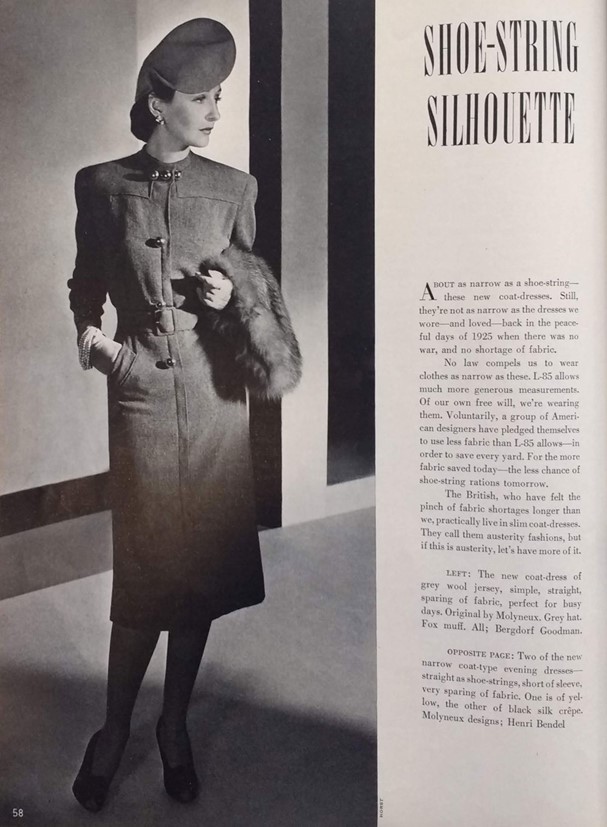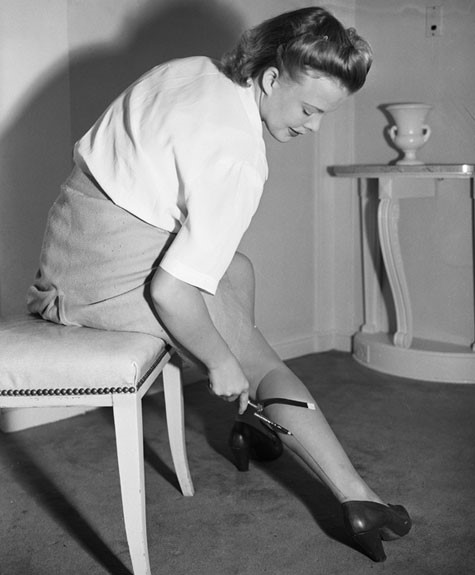Hello! My name is Anna, and I am an admirer of historical fashion and how it reflected women’s roles in society. I am a graduate of Mercyhurst University, where I received a bachelor's degree in Fashion Merchandising as well as a bachelor's in History with a concentration in Museum Studies. I have taught art and art history to students K-12 for two years where I encourage students to explore their creativity all while learning about different art movements and expressions.
Historically, clothing and fashion are linked to many aspects of a culture, often reflecting what is happening in society during a given era. As the devastation of war in the 1940s swept across the world, clothing and fashion were naturally impacted globally as well.
In the United States of America, women’s, men’s, and children’s fashion was mandated by the government rations and supply restrictions that were implemented during the war. Supplies to make clothing like fabrics and notions were needed for the men and women at the warfront. As patriotism swept across the country, generally everyone wanted to do their part in keeping their soldiers safe and the world free from the tyranny of the Axis powers, (Italy, Germany and Japan).
Looking at women’s fashion in America, we can see through examples shown here a common thread of style that was deemed acceptable for female clothing. In Figure 1, we can see a style known as utilitarian. Introduced in the United Kingdom, this look typically had padded shoulders, a synched in waist, and a fitted skirt hitting just below the knee. This was standard for a utilitarian outfit. Any style of clothing using excess fabric like a full skirt or extra trimmings such as folded cuffs, pockets and embroidery was seen as not only unnecessary, but also unpatriotic. How could one think about fashion while our men and women were fighting tyranny and needing every bit of fabric and metal for their military supplies.

Of course, there were exceptions to the rationing of fabrics; brides were able to have more fabric for their wedding gowns. And children, who are constantly growing, were getting new clothing often to accommodate their growth spurts. As seen in Figure 2, the General Limitations Order L-85 from April 8, 1942, explains in further detail what exceptions and restrictions related to both women’s and men’s dress.

Propaganda posters played part in encouraging the American people to utilize what they had and mend their garments rather than purchase a new outfit. Looking at Figure 3 we see the male repairing his push mower while his wife patches up his worn-out jeans. We can also see how America’s idea to ‘make do’ during the war’s fabric shortage permeated into women’s hosiery. In Figures 4 and 5, we see examples of women using leg make up to give them the illusion of wearing nylon stockings. Though stockings aren’t a standard in women’s dress today, they were in the 1940’s and having bare legs was seen as having a lack of class. So, it was important for women to have something on their legs to if their old nylon hose were worn or they did not want to wear rayon stockings which weren’t as well fitting to the legs’ curves.



In the next part of this World War II Fashion Series, we will look at women’s fashion, femininity, and makeup in the work force.
